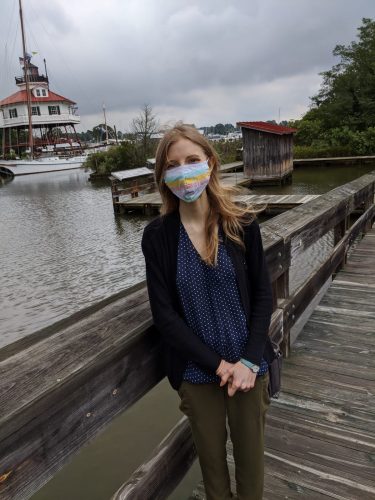Checking out the Calvert Marine Museum

Blog post by Program Assistant Laura Grant. To read more posts from Laura, click here.
Vacations this year feel very different. From new packing list items such as masks and wipes to planning activities with social distancing in mind, summer vacations in 2020 are certainly unique. Recently, I was fortunate to take a quick trip down to Solomons Island in Calvert County to explore the area, visit a few cultural attractions, and spend a lot of time hiking and walking around outdoors. One of my favorite stops was the Calvert Marine Museum, which featured an interesting presentation of pre-historic objects, marine life and natural history, and more contemporary history of the Chesapeake Bay. It was wonderful to visit a museum again after 6 months. Moreover, this museum was unlike the typical museums I frequent which tend to focus only on art, history, or science, and I wanted to share some of my highlights from the visit.
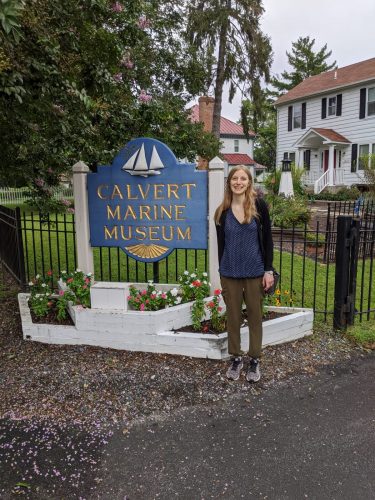
One of the first sections in the Museum is the biology gallery which feels like an aquarium with tanks showcasing the diversity of marine life found in the Chesapeake Bay. Nearby are exhibits dedicated to paleontology. Here, there are fossils from nearby at Calvert Cliffs (also worth a visit) dating back millions of years. One of the most striking fossils was of the Giant white shark, a 35 foot skeletal restoration that greets visitors as they turn the corner.
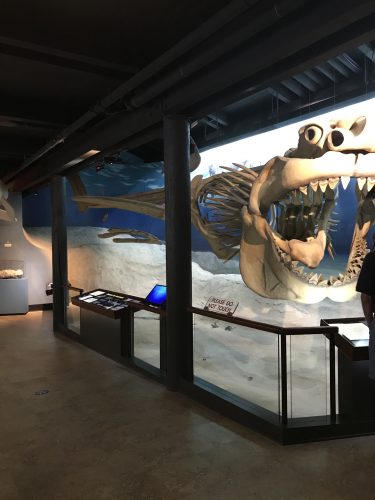
A large section of the Museum is dedicated to maritime history, as the region’s proximity to the water has been integral to its history. This section begins with artifacts relating to the Pawtuxunt Indians, the original inhabitants of the region, and continues over time detailing colonial settlement of the area, the success and then demise of the seafood industry, the impacts of World War II, recreational fishing and boating today, and contemporary environmental challenges the community is facing. The gallery contains several actual vessels, including a large sailboat in the middle.

I particularly enjoyed seeing this time clock from the M. Davis and sons shipyard as it reminded me of the punch clock from our last exhibit, Scrap Yard: Innovators of Recycling, that was used to keep track of workers’ hours as a precursor to modern time clocks.
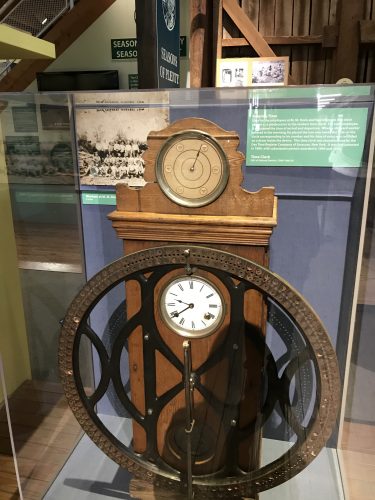
The Museum continues outdoors with an exhibit on boating, the Drum Point Lighthouse, which is no longer operating, and views of the waterfront. One of the last things visitors see before exiting the museum is a large mural completed by a local artist showcasing the different aspects of the Museum and life in the area. I think this mural encapsulates the spirit of the Museum and its mission of presenting the interconnectedness of life in the Chesapeake region between the people, the history, the culture, and the marine and natural life.

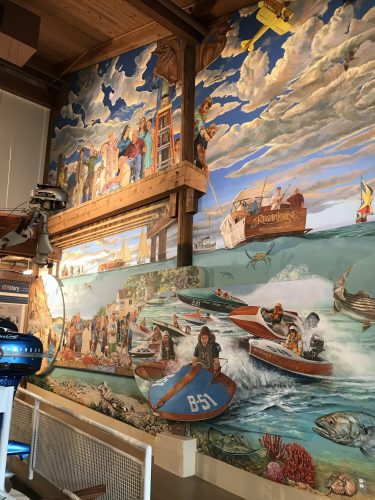
Ultimately, that was one my favorite part of the Museum, that I got to learn about so many different aspects of the local region all in one place. If you’re in the area, I recommend signing up for timed tickets and checking out this unique museum.
